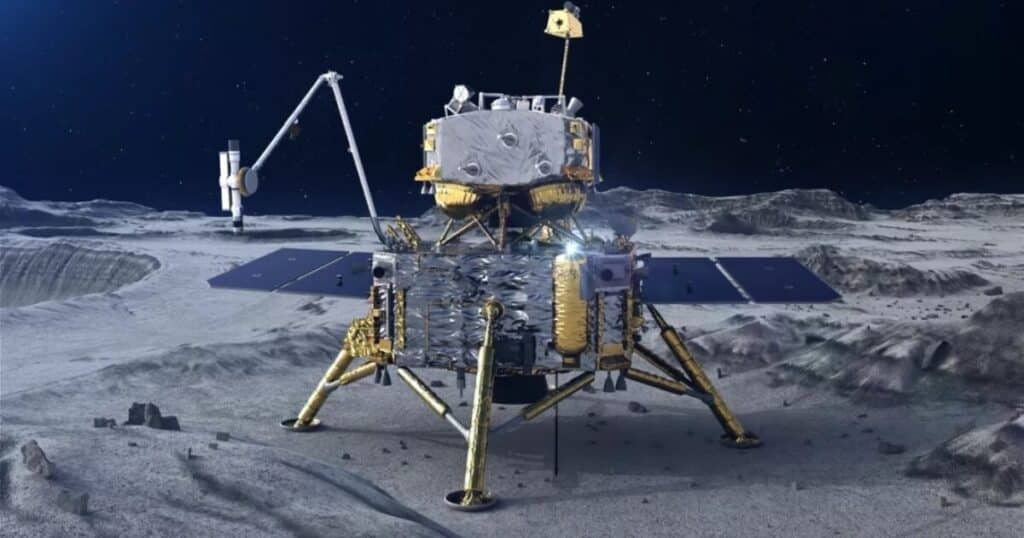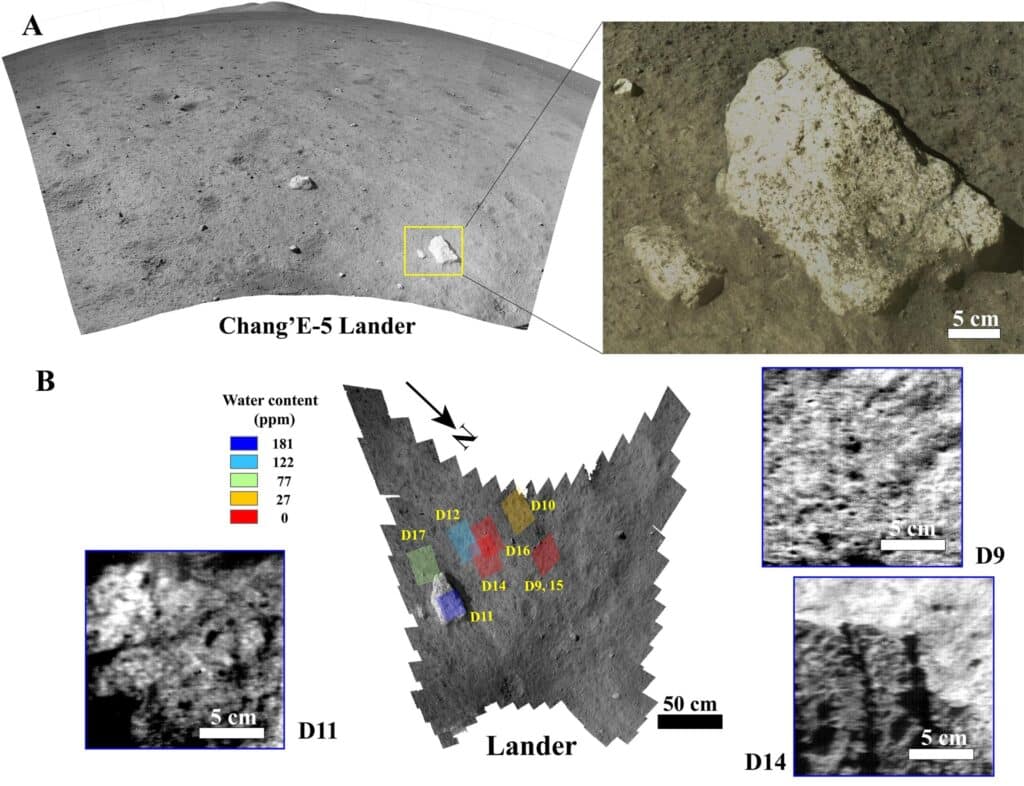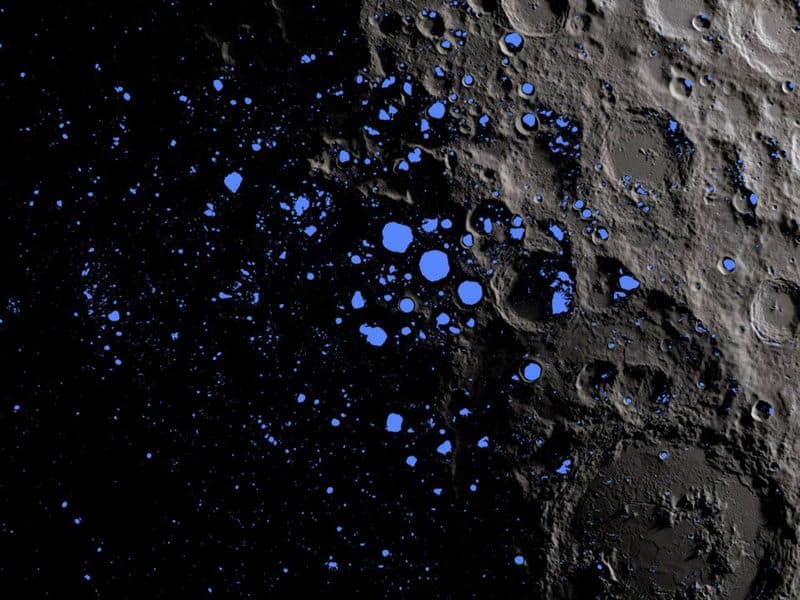Secondo a study published yesterday in Science Advances, scientists from the Chinese Academy of Sciences announce that they have discovered water beneath the lunar surface.
The discovery comes from the analysis of data from China's National Space Administration, which collected information from its Chang'e-5 lander. A surprising result: it is the first mission to return lunar samples since the Soviet Union

Water on the moon: the equipment of the Chang'e-5 lander
The Chinese team equipped the lander with a panoramic camera, a lunar mineralogical spectrometer (LMS), and a lunar penetrating radar to look for evidence of water. With this important "kit" of advanced technologies, the lunar vehicle completed its exploration (profitably).
“It was like a real 'trip' to the Moon,” says the lead author of the study, the researcher Lin Honglei. “The first opportunity to detect near-range, high-resolution water signatures on the lunar surface.”

Water on the moon, how is that possible?
The theory developed by Chinese researchers is that the solar wind gradually pushed the hydrogen atoms towards the Moon, or at least that is what we read in the published report.
Often the important announcements Chinese they required (it is an understatement) a moment of greater attention, when not necessary skepticism. This latest discovery made by the Chang'e-5 lander is no exception. The hypothesis that there is ice and water on the Moon, however, has been feared by scientists for some time.
If the results of this research are confirmed, it goes without saying that the possibility of long-term human presence on our satellite will be even closer.


